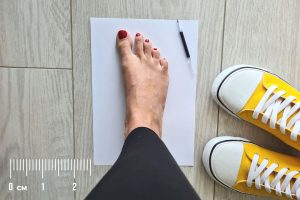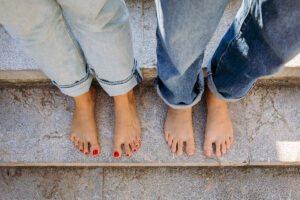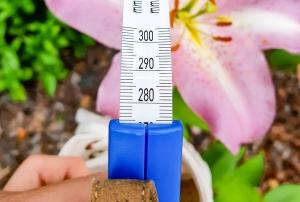Start Your Barefoot Journey: How to Choose Your First Pair

It’s easy to get overwhelmed when starting your barefoot journey and shopping for barefoot shoes, especially once you discover how many choices are out there.
This guide will walk you through many important things you need to consider before buying your first pair of barefoot shoes, so that you can avoid making expensive and painful mistakes.
Unfortunate fact: A lot of people have a bad first experience with barefoot shoes…
Many people have a negative experience with barefoot shoes simply because they pick the wrong ones for their feet or jump into the transition without enough preparation.
Choosing the wrong pair of barefoot shoes can leave you dealing with discomfort, injuries, and wasted money. Without the right fit or an understanding of how these shoes interact with your body, you might end up with blisters, sore muscles, or even long-term foot and leg pain.

Your feet and legs are often accustomed to the cushioning and support of traditional footwear. Transitioning too quickly can strain your Achilles tendon and calf muscles, which suddenly have to do more work than they’re used to. This can lead to tendonitis, shin splints, and other painful conditions.
By taking the time to understand your needs and the features of barefoot shoes, you can ensure a smoother transition and enjoy the benefits of barefoot living without the drawbacks.
Fortunately, we at Barefoot Universe are here to help
This article is designed as a small guide to the world of barefoot shoes. We will guide you through the appropriate purchase of barefoot footwear and teach you how to identify the right model for you.
Why should you trust us? Because we’ve been wearing barefoot shoes since 2016, and since then we have tested more than 1000 barefoot shoe models, built a community of over 450k barefoot followers, and developed two courses that have helped hundreds of people make the transition to barefoot shoes without sacrificing comfort or style and without breaking the bank.

We know all of the ins and outs of barefoot shoes and walking, so we know we should start this guide where most people make their first mistake:
Forget everything you know about shoe sizing
If you have been used to choosing footwear based on your “normal shoe size”, which you bought regardless of the brand, shape, and purpose of the shoe, be prepared to change your approach.
Although barefoot shoe manufacturers try to make models that fit as wide a range of people as possible, not all barefoot shoes are suitable for all foot widths and shapes.
What fits your friend may not necessarily fit you.

Apart from the length and width of your feet, you should also take into consideration the volume of your foot, the height of your instep, and the shape of your toes (more on that later).
Remember this process is about finding the right shoe to fit your feet, not making your feet fit in a shoe, so always measure your feet before ordering shoes.

Have someone close to you help you take the measurements. Manufacturers use different ways of measuring shoes (there is no standardized method), but usually, the internal length and width of the shoe are given in the size charts, like here for an example:

And be careful – the length of your foot is not the length of the shoe you need!
Scientific studies recommend you have approx. 12 mm of extra space in the front of the shoe, where your toes are.
You’re probably wondering why you need so much space…
Feet that have become “accustomed” to this lack of space through years of squeezing into too-short, cramped shoes may initially find this space superfluous. But a functional foot needs space to move and very quickly gets used to freedom again.

Of course, the amount of space needed in front of your toes also depends on the type of footwear (winter models, sandals), your age (children also need space to grow), and how well the shape of the shoe mimics the shape of the foot.
A good benchmark is to have at least a few millimeters of space in front of your toes, even when you are squatting and walking.
Bear in mind that a non-functional foot may also have a problem with proper pronation/supination, so you may not achieve full extension of the foot at the start.
The width measurement also needs some extra space…
Usually, in addition to the internal lengths of the shoe, the size charts also give the internal widths of the shoe. There is an unwritten rule that a shoe should be about 2-4 mm wider than the measured width of the foot.
Choose shoes that are wide enough to allow all the toes in the shoe to spread properly when walking.

Due to the many factors that influence the feeling of the width inside the shoe (volume of the shoe and foot, design of the sole, materials used, etc.) and the different measuring techniques (measuring horizontally, diagonally, or at different points), the value recorded in the size chart is not necessarily always fixed and unchanging.
Different foot volumes therefore have different available widths in the shoe (width can only be described by a measurement in two-dimensional space, whereas our foot is three-dimensional).
When determining whether the width of the shoe is appropriate, always check that the toes can get into their natural position inside the shoe too.
Finally, it is time to buy your shoes!
Although the range and number of shops offering barefoot footwear have increased enormously in recent years, most purchases are still made online. For many people, the thought of buying shoes from an online shop is daunting.
We understand your dilemmas and we know that buying online (at least for the first time) is not such an easy task.
There are upsides to buying online though:
- You have more to choose from since not all brands have physical stores everywhere around the world,
- it is easier to compare prices and reviews to make sure you are getting the best deal,
- you have access to more special offers, discount codes, and sales.

Apart from that, you can always return or sell a shoe if it ends up not fitting. And while we are on the topic of selling…
You’ve probably heard many times that second-hand shoes are not recommended as they can hurt your walking pattern.
Barefoot shoes do not fall into this category, as they do not need to stretch and mold around the foot as narrow, non-barefoot shoes do, thanks to their proper shape and thin soles.
You can, for example, buy second-hand barefoot shoes in various barefoot Facebook groups or online and try them on at a more affordable price.
But no matter where you end up buying your shoes, there is a wrong and a right way to try them on the first time and decide if they are the right shoes for you.
How to give your shoes a proper test run
Trying barefoot shoes for the first time is always something special. The difference in toe space is noticeable and the feeling of a thin sole can be unusual (you feel barefoot or like you can feel every pebble).
Some people find they feel like their posture is being “pulled back” (due to the body adjusting to an inappropriately elevated heel in conventional shoes).
Barefoot shoes certainly look visually different too. In particular, they are wider, which may feel strange at first. But we assure you, you’ll get used to the width and soon all your normal shoes will be unusually narrow and tight.
When trying on a barefoot shoe, it is important to find out if it is suitable for your foot. In particular, look for the correct width, length, and fixation of the shoe.

Not all barefoot models are suitable for all foot widths and shapes. Remember that even the narrowest barefoot shoe will be wider than your normal shoes, but that doesn’t mean it’s wide enough for you, although it certainly works more comfortably than the footwear you were wearing before.
It is also important that you give yourself and your feet some time to adjust…
The Importance of a Transition Period
Diving into barefoot shoes without preparation can set you up for failure. Your feet and legs have spent years, perhaps even decades, in traditional footwear that provides cushioning and support.
Transitioning to barefoot shoes is a significant change that requires a gradual adaptation period to ensure a smooth and pain-free experience.
Jumping straight into wearing them full-time can play a part in overuse injuries like tendonitis, plantar fasciitis, and shin splints. These conditions can be painful and may sideline you from your usual activities, defeating the purpose of switching to barefoot shoes in the first place.

Without proper preparation, you might face unnecessary pain and setbacks. To transition successfully and enjoy the full benefits of barefoot shoes, it is good to have some guidance and a well-structured plan.
Get Expert Guidance with Barefoot Universe Academy
To ensure you transition safely and effectively, we invite you to join the Barefoot Universe Academy.

Our comprehensive course is designed to provide you with expert advice, tailored exercises, and a step-by-step plan for making the switch to barefoot shoes.
Don’t risk injury or discomfort—equip yourself with the knowledge and support you need for a successful barefoot journey.
During the course, you will discover:
- How to transform your foot health and improve your posture with the right pair of barefoot shoes and exercises, even if you’ve been struggling for years!
- How to choose the perfect pair of barefoot shoes for your feet and lifestyle, based on your unique needs and preferences – we will help you measure your feet correctly and figure out all of the particularities you need to take into account.
- An overview of different brands and styles of barefoot shoes on the market with in-depth reviews and practical advice – including discount codes you can use to get special offers and lower prices!
- The best foot exercises to strengthen your feet, improve your balance, and prevent injuries – so that your transition to barefoot shoes is fun, safe, and easy.
- How to implement healthy foot habits and routines into your daily life to maximize the benefits of barefoot shoes and exercises!
- How to maintain your foot health and make it a long-term habit, ensuring you continue to experience the benefits of barefoot shoes and exercises for years to come.
Take the first step towards healthier, more natural movement – read about the course and join us by clicking on the link below.








You are great! Everything that you do, you do with the heart😊👌
Thank you for your kind words <3
Just done the quiz,
The results came out that my feet are extra narrow, apparently only 5% of the population have extra narrow feet.
I am unsure what bear foot shoes I can buy for such a narrow fitting. Also I’m disappointed that usually for people like myself have very little options when it comes to footwear.
Most shoes look unfashionable, so I struggle to get footwear to suit the clothes I buy. I’m looking for black and brown boots. I don’t really wear trainers. I prefer the look of shoes.
Are there any barefoot companies that make narrow fitted shoes, not just aluminous coloured trainer’s?
Hi Katherine,
Tjaša also has extra narrow feet, and finding barefoot shoes that fit isn’t as difficult as it might seem. A few extra millimeters in width is beneficial because it allows her toes to spread.
Shoe fit depends a lot on the shape and volume of your feet, as well as the overall condition of your feet (e.g., are they fully functional, are your toes positioned correctly, did you measure correctly, etc.). In general, here are some brands that should fit well even if you have extra narrow feet, which Tjaša wears all the time: Vivobarefoot (Chelsea and boots), Peerko boots, Wildling Tanuki models, Koel, Feelgrounds, Froddo, Groundies, Langs and others.
If you’d like to learn more about your feet and how to find the perfect fit, we recommend our Barefoot Universe Academy online course. We also have many reviews on our blog where you can check the fit information for specific brands/models.
Hope this helps! While barefoot shoes may feel “wide” at first, trust us, your feet will thank you for the extra space they finally get to enjoy.
Are there any additional narrow styles or brands that are Tjaša’s favorites? Especially summer / warm weather shoes.
Hi Miki,
VIVOBAREFOOT is the brand where almost every style fits her really well. Wildling Tanuki is also one of her summer favorites. She can also comfortably wear other brands like Feelgrounds Original Mesh, Dolfie Paradise (all styles), and Blusun. For sandals, you can check out Lang.S, Lonnie Sandals, Panta (with customized fit), or Earth Runners.
I don’t really understand the width and sizing thing, I’ve never heard that you should add 2-4 mm to your width to get the right size, as that would make it even harder for me to find a proper fit. And you don’t give any guidance about which part ot the foot is wide, as many barefoot shoes are narrower at the toes than the ball of the foot. I would say my foot shape is close to number 3 in the guide, and I have a hard time finding any shoes to fit my foot type, even though my foot is average to wide according to your quiz
Hi Johnny, the width of barefoot shoes is typically measured at the ball of the foot. However, because our feet are three-dimensional and we are trying to describe them with a two-dimensional value, deviations may occur. When choosing your shoes, always measure your feet and compare them to the size chart. Also, pay attention to your foot shape and the shoe’s toe box shape. You can also check two other posts where we talked in detail about Foot Types and Best barefoot shoes for your foot width.
My foot shape is square/ plateau. All of my toes are short and thick. My big toe is wide and thick. I have a high volume foot . The depth of the toe box and mid foot are as important as the width for me. Some shoes are wide enough but are too shallow in the depth.. How do I determine if a shoe has enough depth?
Hi,
we always try to include notes on shoe volume in our reviews – not just width, but also the depth of the toe box and midfoot, since we know that’s just as important for many people.
Based on what you described (square-shaped foot, wide and thick toes, high volume), Wyde might be a great option for you. Their shoes have a very roomy toe box, plenty of depth, and are made specifically for wide, high-volume feet.
You can find our full review here: https://barefootuniverse.com/wyde-footwear-extra-wide-toe-box-shoes/
I was just wondering if you had any good brand recommendations for me, I have extra wide feet and have been struggling to find shoes accommodate my width without being too long. I started off with Vivobarefoot when I first transitioned but now their shoes are just too long when they fit almost perfect width wise
Hi Isaiah,
on this list you can find our recommendations for wide and extra wide feet.